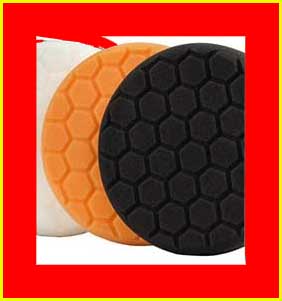Well I did it. Flushed coolant system, and changed coolant,
thermostat and
heater control valve (
DCCV). It all went well, no issues, and
coolant temperature is running right where it was before i started. Even got it full without having to do a whole lot, just followed fill and bleed procedure in
service manual. FWIW - here's what i did, it may be helpful to others with 20 year old cars with original coolant. For reference i have
service manual, scoured this website which is always helpful, and looked at a couple videos available on internet. Ford tech Makuloco has a great video on flushing Ford coolant systems that i have used in the past on my other Ford vehicles. I followed his recommendations for the VC-1 flush
part of the process.
Remove front of engine cowling, top of engine cowling, and front bottom of engine cowling. Loosened clamps holding air intake tubes and
air filter hold down. Run engine up to temperature. Turn engine off. Open degas bottle top (carefully and slowly as pressure will be present), open
radiator drain, once it drains a bit, open coolant fill (top of engine). Remove air intake tube from
air filter box and engine and swing out of the way to allow access to the TStat housing. Remove large hose from Tstat housing and remove Tstat housing. Open heater core vent tube (straight screwdriver and turn CCW to remove vent plug. Using Shop vac and varying sucking or blowing at degas bottle, vent tube, and top of engine i was able to get ~ 2.5 gallons of old coolant out. Capacity is 3 gal. Coolant was quite dark compared to new VC-7A/7B but not too bad (no debris or
rust).
Run garden hose in degas bottle to flush bottle and run that out the bottom of
radiator. Again suck/blow at available locations to get all this water out. Close
radiator bottom drain. Put Tstat housing back on (TStat still in place). There is an Oring on the housing that i reused as i could not determine the P/N for a new one. Lubed ORing with silicone grease. Leave cap off the top of the engine fill. Add
Motorcraft VC-1 flush (1 quart to degas bottle). Put hose in degas bottle and add slowly till it starts coming out the top of engine fill cap. Squeeze hoses to help burp. Put cap on top of engine fill, continue filling at degas bottle with hose until bottle is at full cold level. Start and run engine up to temp with heaters set to 90oF (full hot). Add water if necessary to degas bottle to keep in full hot range. Close heater core vent tube when steady water stream is coming out. Reassemble air intake hose (do not run engine without the air intake fully assembled and filter in place). Run engine for 15 minutes or so varying RPMs up to 1500 - 2000 every couple minutes. Monitor engine temperature, monitor heater output (should be blowing warm). Do this for about 15 minutes to flush the VC-1 coolant flush throughout the system. After 15 minutes, with engine still running, open
radiator drain plug and turn hose on in degas bottle. Add water at about the same rate that the water is coming out the drain, i.e. the water level in degas bottle stays the same. Keep engine at idle. Do this for 15 or 20 minutes until water coming out is clean and no more "bubbling" (due to VC-1 flush). Monitor engine temperatures while doing this.
Once water runs clean and you have rinsed all the VC-1 out of the system, turn engine off and drain everything once again (through
radiator bottom drain, remove TStat housing, open heater core vent tube, suck/blow with Shop Vac, etc as was done the first time). Again i got about 2.5 gallons out. Put Tsat housing back on, close
radiator drain and fill system with distilled water at the degas bottle, using same fill and vent as described before. Run engine up to temperature and add distilled water to degas bottle if necessary to keep at full cold level, put cap on degas bottle and run for about 5 minutes at idle with heaters on and blowing hot. At this point you should have a very clean system flushed of all VC-1. Drain everything one more time.
Reassemble TStat housing with new Tstat (STANT 49499). Remove old
DCCV and install new
DCCV (
Motorcraft YG-378 / 2R8Z-18495-AA). Once
DCCV is out you have access to 3 more hoses to/from heater cores, so i sucked/blowed the water out of these heater hoses with Shopvac. Reassemble everything and fill with 1.6 gallons
Motorcraft VC-7B (MC gold
antifreeze). Capacity is 3 gallons, so i am a little over 50%. Top off with distilled water. Fill as described before. Run to temp and if level goes down top off with distilled water. Check coolant for freeze protection and monitor next couple times out and top off with distilled water if the level drops below the full cold level on the degas bottle.
No issues. Temp guage at same position as before. No air locks, no
overheating, etc.
Hop this helps anyone inclined to do this themselves.
JohnG



